I am not often one for all this New Yr malarkey—time ticks over on the similar price because it ever did, and I am no massive believer in astrology, so what does the calendar date matter? (And bah, humbug!) However even I am unable to assist getting a little bit excited at what 2025 would possibly provide us PC players.
The large ones to look out for will clearly be new graphics playing cards from each Nvidia and AMD and handheld gaming PCs that includes the most recent AMD and Intel cellular processors. We’re hoping to see lots of these items at CES in January, and on that entrance, I would advocate testing our Andy’s run via the whole lot we count on to see on the present.
However I am trying past all that, throughout the distant horizon, into the land of what the extra sceptical would possibly name pure fantasy. However really, I feel lots of the issues on this {hardware} wishlist are cheap expectations for 2025, and a few of them downright doubtless. So, here is what I am searching for in 2025:
Low-cost and funky PCIe 5.0 SSDsAI-accelerated renderingAn all-Nvidia laptopA highly effective AMD Strix Halo laptop computer processorMore AMD X3D chipsSteam MachinesA Steam Controller 2A Valve Deckard VR headsetMore hidden connector motherboardsCheaper CUDIMM memoryMore CAMM2 memoryMore inexpensive OLED monitorsARM desktop chips
1. Low-cost and funky PCIe 5.0 SSDs
They won’t be probably the most glamorous piece of equipment, however SSDs hold the information flowin’. And over the course of 2024 we already noticed large enhancements in SSDs, to the extent that quick 2 TB drives are actually a fairly customary affair, even when some system builders nonetheless must be given that exact memo. These enhancements, nevertheless, have been primarily of the PCIe 4.0 selection.
We’re nonetheless recommending Gen4 drives as the very best SSDs for gaming, and that is primarily as a result of Gen5 drives are too sizzling and costly. The controllers they use get so toasty they often require gigantic coolers on high simply to run, and so they typically price an inordinate quantity greater than the now-reasonably priced Gen 4 drives.
However no too way back we noticed promise of some extra power-efficient—and subsequently additionally extra thermally environment friendly—PCIe 5.0 SSDs, and if our Zak Storey’s Corsair MP700 Elite 2 TB evaluation is something to go by, this promise is well-founded.
So I am actually hoping 2025 is the yr low cost and funky PCIe 5.0 SSDs hit the mainstream market. There’s purpose to imagine this might occur as a result of we now have CPU generations and motherboards that may actually make use of them due to extra PCIe 5.0 lanes and slots, and there’ll absolutely be extra such motherboards to come back.
2. AI-accelerated rendering
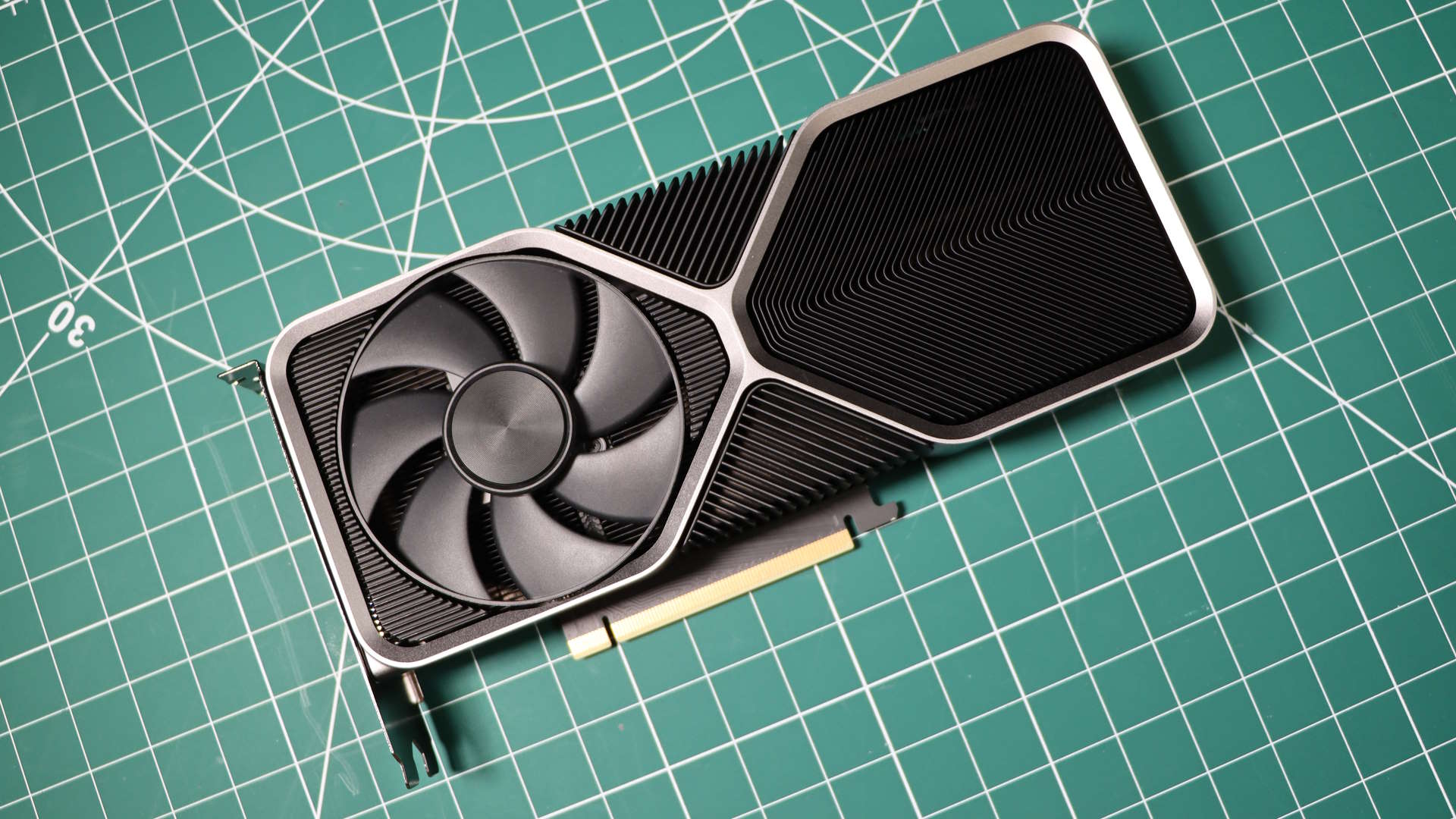
It is no secret that Nvidia’s within the enterprise of AI, and it is no shock that this enterprise has—for good or for in poor health—contaminated the PC gaming market. AI-accelerated DLSS upscaling and body technology has change into one thing of a tender requirement for enjoying many fashionable titles at something like an inexpensive body price.
However the place can we go subsequent? Nicely, clearly we’re all hoping that DLSS 4 (and probably FSR 4) will give us body technology and upscaling enhancements, nevertheless it’ll be cool if it offers us one thing new, too.
It seems we have already got intimations of simply such a factor within the type of “neural rendering”, which an AIB producer just lately talked about in seeming relation to next-gen Nvidia GPUs. If AI can do for rendering what it is accomplished for upscaling and body gen, we is likely to be in for a deal with.
And pay attention, I am fairly cut up over AI-accelerated something. I wish to personal the body rate-producing energy that I pay for once I purchase a graphics card, not (primarily) lease it out from Nvidia’s neural community. However hey, frames are frames, and if such tech offers a big sufficient enchancment, perhaps I should not complain.
3. An all-Nvidia laptop computer
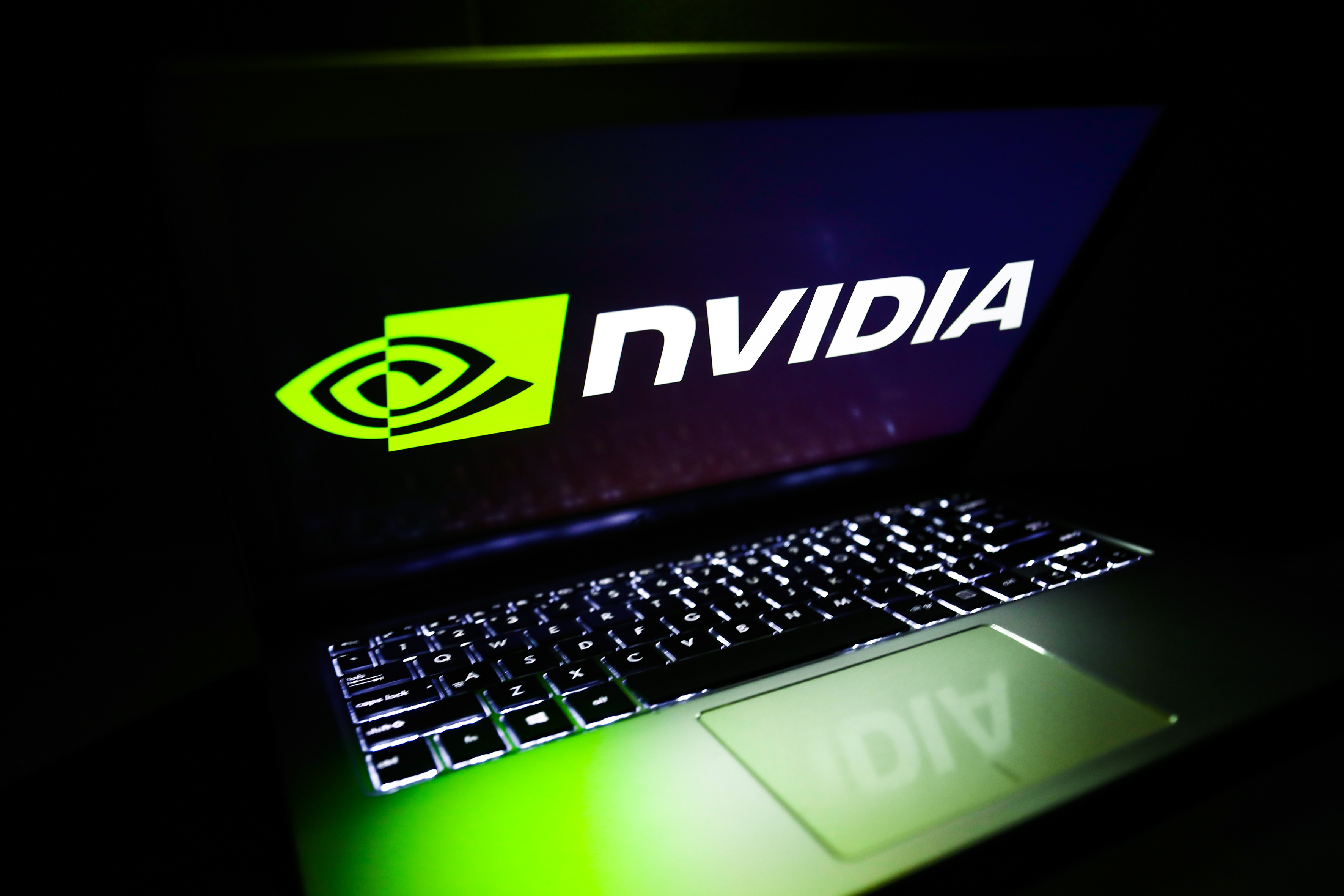
It was once that Nvidia sat comfortably in GPU-land, Intel sat in CPU-land, and AMD straddled the boundary of each. However we have already seen Intel slide into the GPU market with its Arc graphics playing cards and Xe structure, and we have additionally heard hearsay of Nvidia becoming a member of the CPU scene for a few yr decade now.
Rumours on this entrance have began to ramp up of late, with Nvidia-Mediatek partnered chips rumoured to enter manufacturing in 2025 and the primary APU from the duo to characteristic RTX 4070 cellular and Strix Halo efficiency.
This may be an ARM chip, not an x86 one. The phrase on the road is that there are tons of enhancements to Home windows on ARM within the works—we have already seen that an Insider construct now helps AVX and AVX2 directions, which ought to assist get extra video games up and working—so there’s purpose to imagine that is true.
To not point out the sheer existence of Qualcomm’s Snapdragon X chips, which exhibits, to a restricted extent, what Home windows on Arm is likely to be able to. Now, in 2025, we simply have to see what the inexperienced crew (hopefully) has to supply on this entrance.
4. A strong AMD Strix Halo laptop computer processor
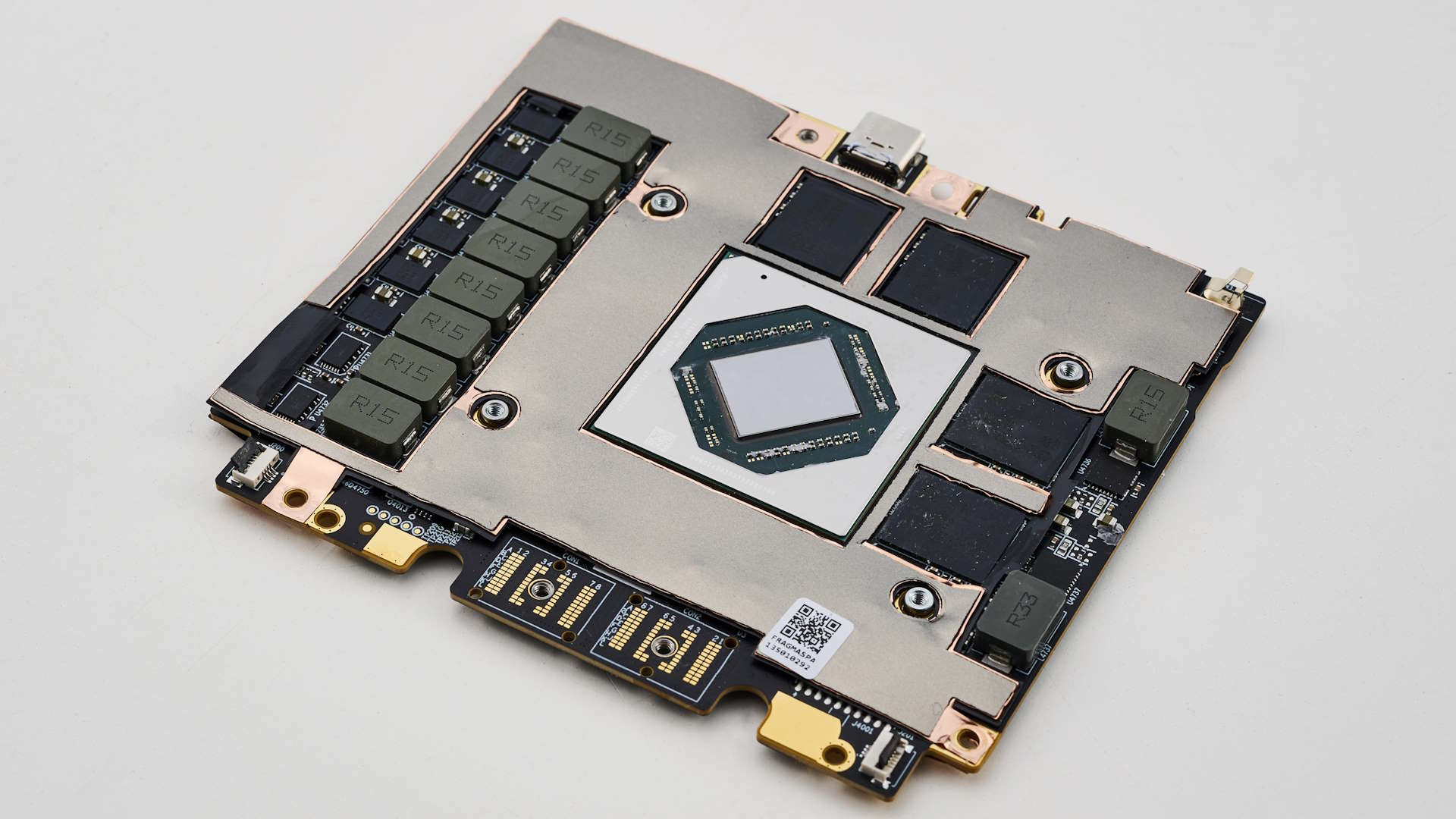
I by no means thought I would see the day once I was really extra excited for brand spanking new built-in graphics than discrete graphics, however with simply how good APUs are lately—I imply, simply have a look at handhelds—I feel I am over that threshold now. And topping that built-in graphics record is a doable AMD Strix Halo chip.
“Strix Level” is the codename for AMD’s newest AI 300-series processors, which we’re anticipating to see in some handhelds and laptops come 2025 (and certainly, we already see Strix Level within the OneXPlayer OneXFly F1 Professional). Strix Halo refers to an as-yet unannounced top-of-the-line “halo” product utilizing this structure.
The newest rumours have us anticipating as much as 16 Zen 5 cores and 40 RDNA 3.5 CUs in Strix Halo. For reference, the AMD Radeon 880M—the cellular GPU discovered within the AI 9 HX 370—has 12 CUs, so you’ll be able to see why we’re eager for some Strix Halo Merchandise.
Strix Halo most likely will not maintain a candle to the form of high-end discrete graphics out there in a number of the greatest gaming laptops, nevertheless it ought to provide efficiency that far surpasses present handhelds, all for much much less energy consumption than laptops with discrete GPUs. Which could imply gaming laptops that may play immediately’s video games comparatively effectively with out draining the battery in below 2 hours (as appears to be the prerogative of gaming laptops immediately).
5. Extra AMD X3D chips
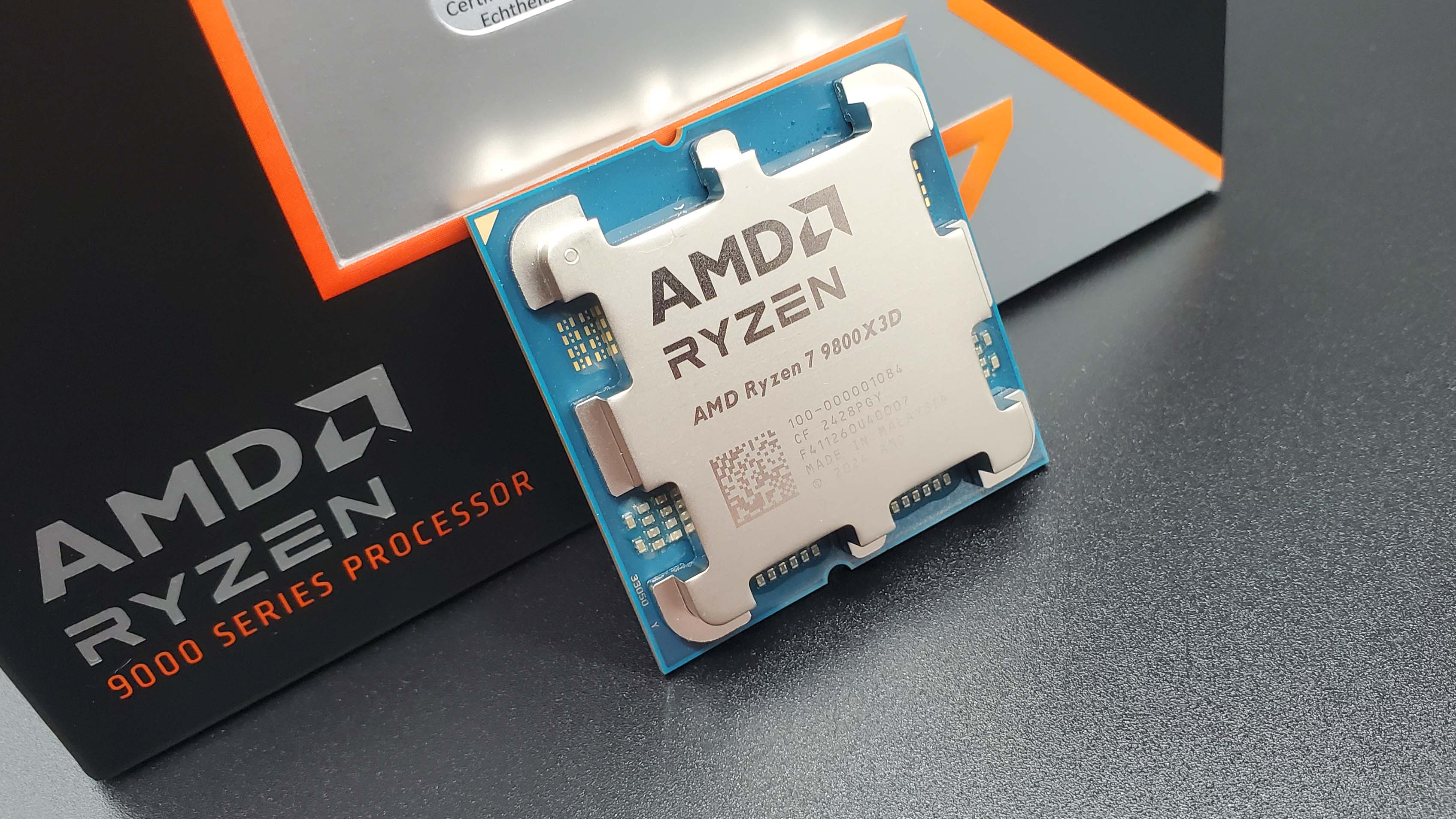
The AMD Ryzen 7 9800X3D, which launched a few months in the past, is way and away the very best CPU for gaming. X3D chips are nice for gaming as a result of they vertically stack tons of cache, and video games are fairly hungry for this. The 9000-series X3D design improved on the 7000-series one by placing this cache beneath the chip somewhat than on high, which permits for higher cooling and subsequently higher efficiency.
There have been rumours circulating for some time that the Ryzen 7 9800X3D might be adopted up in early 2025 by a extra highly effective Ryzen 9 9900X3D and 9950X3D. If these do launch, they’re going to most likely be for many who need stellar 3D-stacked gaming efficiency however higher productiveness efficiency than the 9800X3D.
The previous-gen Ryzen 9 7950X3D and 7900X3D stacked the identical 64 MB of additional L3 cache on a chiplet, however there have been extra cores within the processors (half of which did not use that stacked cache) for higher multi-core efficiency.
Within the case of the 7900X3D, a 12-core chip, this really meant that solely six cores (one chiplet’s value) somewhat than the 7800X3D’s full eight cores, may use the stacked cache, which meant it was really a little bit worse for gaming than the Ryzen 7 chip.
If we get a 9900X3D, it’s going to be attention-grabbing to see whether or not the identical design alternative is made or whether or not each chiplets will get entry to the stacked cache. If each chiplets did get entry to the stacked cache, then we may count on that very same top-tier gaming efficiency with none software program required behind the scenes to repeatedly place workloads on the very best cores.
6. Steam Machines

Bear in mind Steam Machines? Me neither—they have been considerably DOA after the circa 2015 launch. But when they’d labored out, what a factor they might have been: Steam-based units like a Steam Deck, however desktopified.
Nicely, in December, Valve’s “Powered by SteamOS” branding was unveiled, suggesting SteamOS will quickly “energy” extra than simply the Steam Deck and seemingly extra than simply Valve-made merchandise, too.
A Valve branding doc (PDF) acknowledged: “The Powered by SteamOS emblem signifies {that a} {hardware} machine will run the SteamOS and boot into SteamOS upon powering on the machine. Companions / producers will ship {hardware} with a Steam picture within the type supplied by and / or developed in shut collaboration with Valve.”
We’re at present anticipating this to sign the existence of non-Valve-made however however SteamOS-powered handhelds, and a just lately introduced January Lenovo occasion that includes Valve as a particular visitor suggests as a lot, albeit removed from definitively.
Along with handhelds, although, it is arduous to think about “Powered by SteamOS” being one thing restricted to only handhelds, particularly on condition that Valve’s lengthy been working in direction of a basic SteamOS launch. And if there’s such a launch, effectively, that’ll open the doorways to every kind of third-party or DIY Steam Machines working Valve’s OS. Possibly even an all Nvidia/ARM laptop computer. And heck, perhaps even an official Valve one.
And this final possibility won’t appear so loopy when you think about my subsequent 2025 wishlist merchandise.
7. A Steam Controller 2
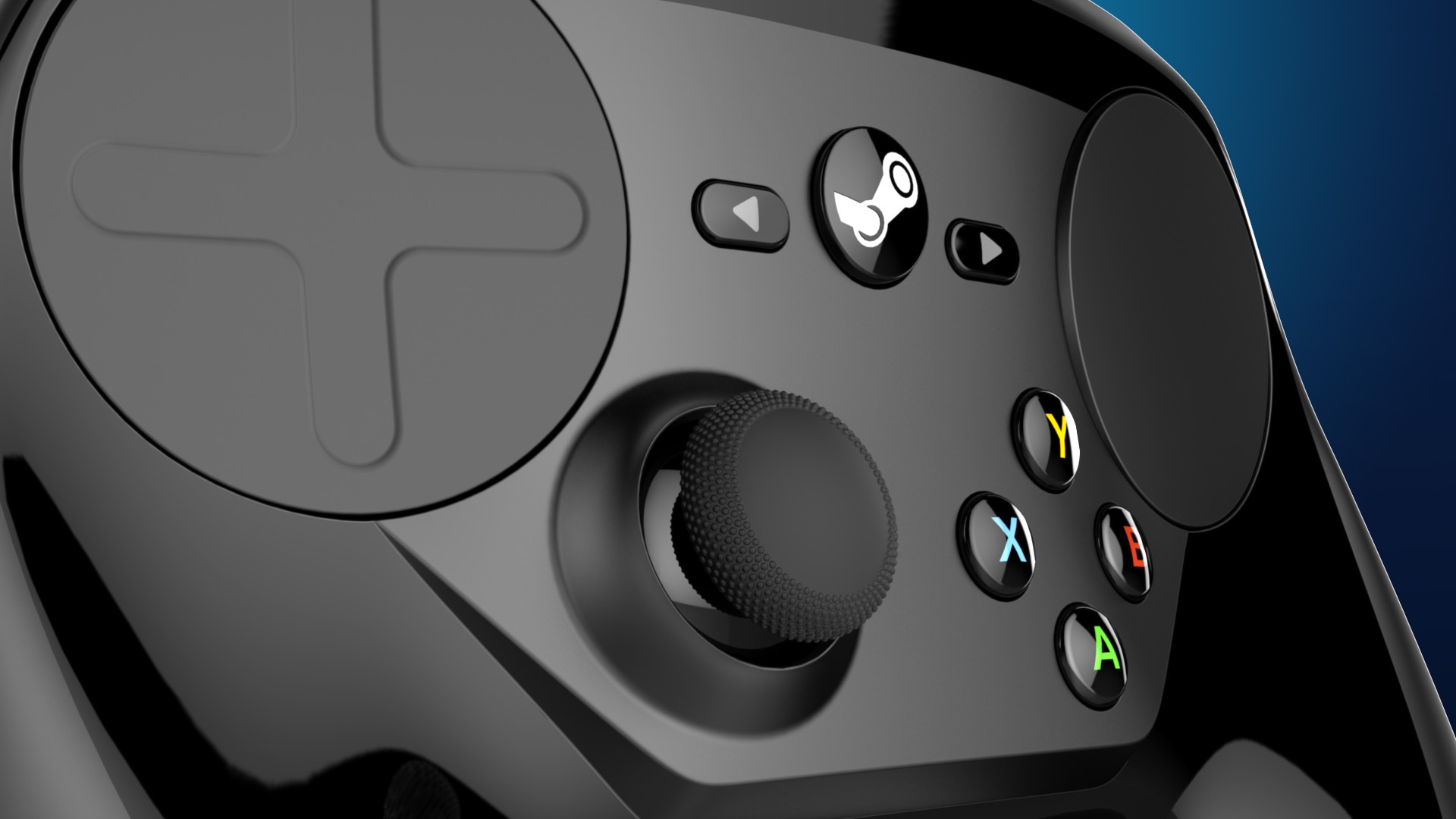
Sure, here is one other throwback to circa 2015, and once more to a different product that by no means actually caught on—though it did have a considerable following of ardent defenders. It featured back-paddles, gyro motion, and two trackpads in lieu of dual thumbsticks. The thought was that, by utilizing correct customized configs, these unusual controls may let you simply play video games that lack nice conventional controller help and offer you some approximation of the accuracy of keyboard and mouse management in a pad.
Now, there’s hearsay that the Steam Controller 2 (codenamed “Ibex”) is already Sin mass manufacturing. That there might be a Steam Controller 2 is not a lot of a shock on condition that Steam Deck designer Lawrence Yang stated in 2022, “yeah, we wish to make it occur. It is only a query of how and when.” What’s stunning is that, if the mass manufacturing hearsay is true, this “when” may very well be very quickly.
We do not know precisely what a Steam Controller 2 will convey, both, which is thrilling. It may convey the identical design as the primary model, however Valve has additionally learnt rather a lot since then. The Steam Deck, as an example, has each trackpads and thumbsticks, so a Steam Controller 2 may choose for the same design to this. We’ll have to attend and see, hopefully someday within the coming yr.
8. A Valve Deckard VR headset
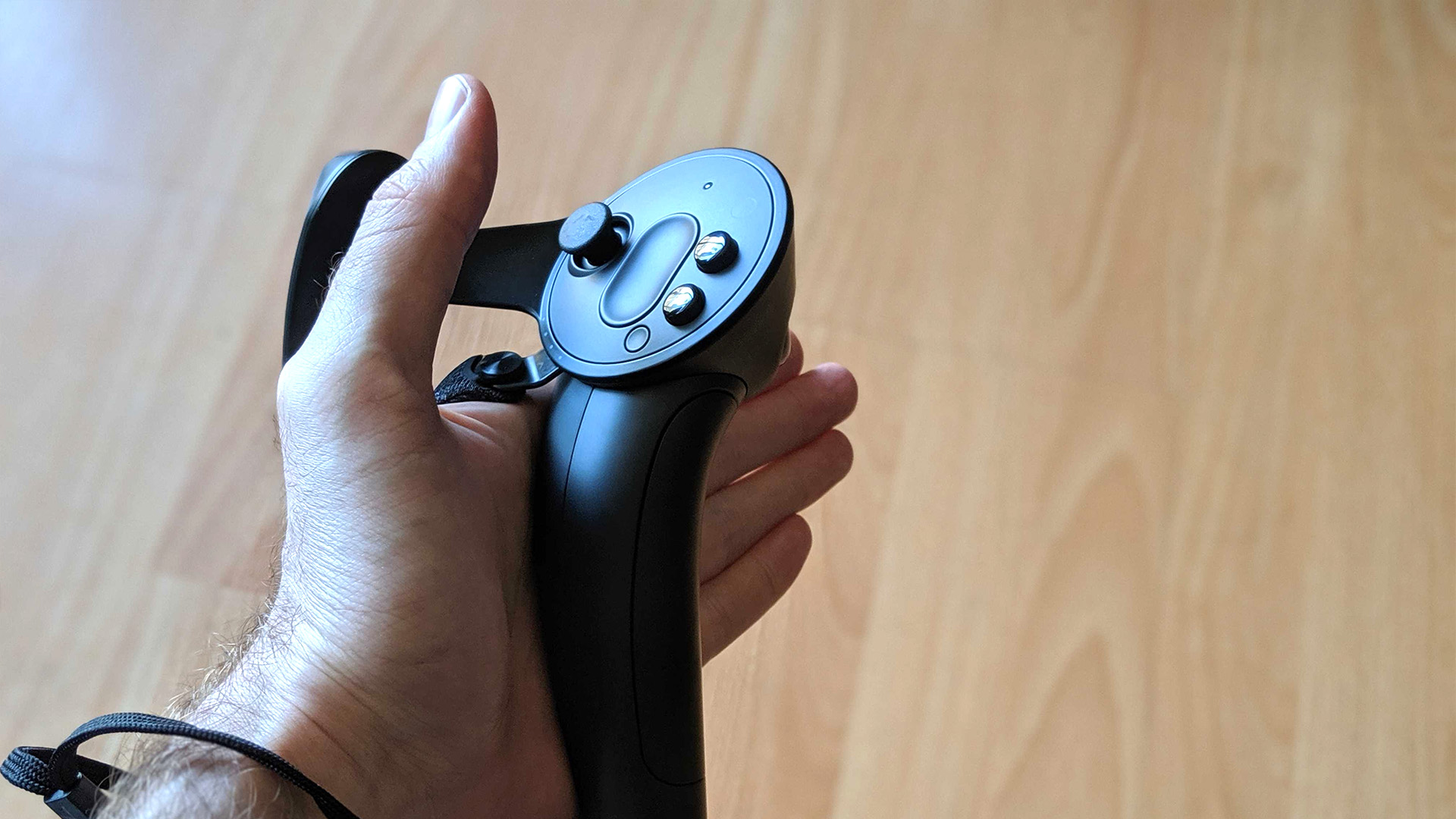
We have heard whispers and intimations of an upcoming Valve “Deckard” VR headset for years. For these unaware, it is a rumoured Valve Index successor that is likely to be fully standalone, that means it is capable of be powered by its personal inside {hardware} somewhat than by your PC. So no cables. Or your PC for extra energy.
This is not all whispers, both. Valve even launched a patent together with plans for a brand new VR headset again in 2021, and though submitting a patent does not commit you to producing the product, this was on high of tons of different cheap rumours surrounding the headset.
The identical supply that just lately claimed the Steam Controller 2 is in mass manufacturing additionally claimed that Deckard controllers (codenamed “Roy”) are in mass manufacturing now, too. So, there’s not less than some purpose to imagine we may see Deckard in 2025.
A part of the rationale that is thrilling is as a result of the Valve Index was significantly beautiful when it got here out, providing a really top-tier VR expertise. However tech has moved on since then, and now the Index appears a little bit dated. In different phrases, Valve’s due a high-end VR refresh, in my eyes. And with all the corporate’s learnt about {hardware} manufacturing over the previous few years, I am hopeful.
9. Extra hidden connector motherboards
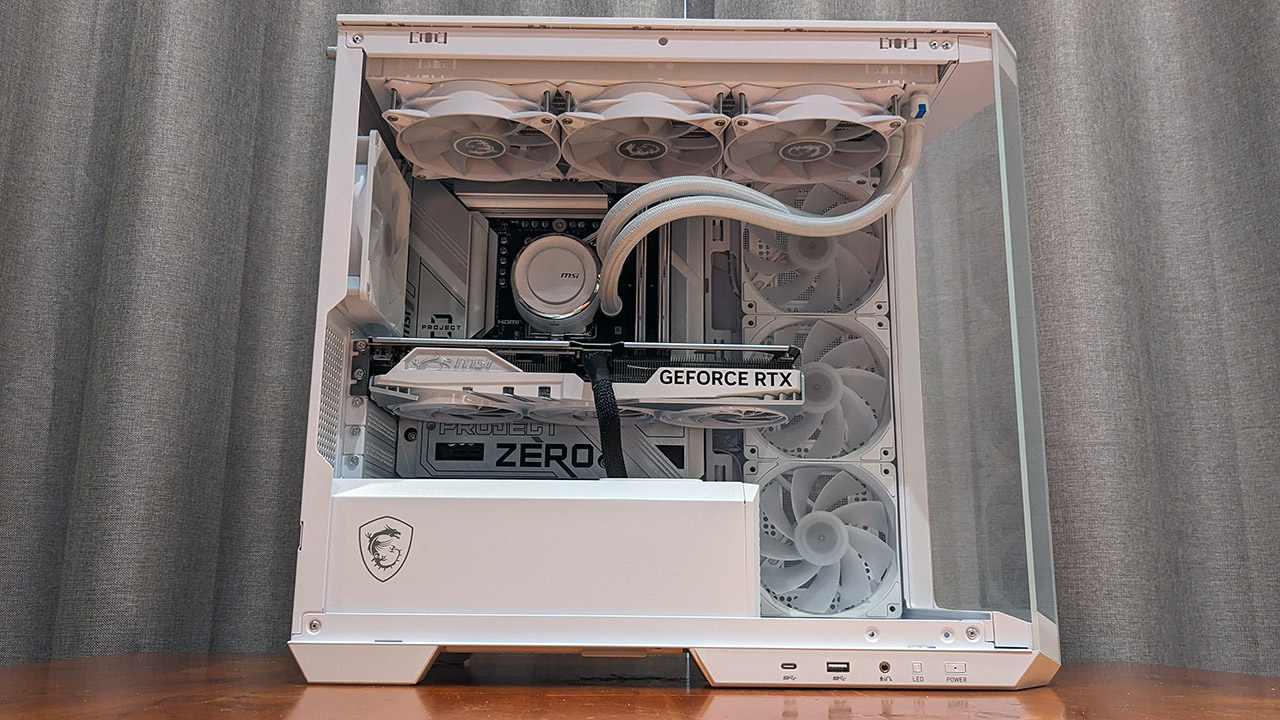
It won’t be as thrilling as new VR headsets and handhelds, however one pattern that tickled my fancy in 2024 was the introduction of Again Join / Again-to-the-Future/Again-to-Entrance (BTF) hidden motherboard connector designs.
Folks first appeared to be aware of such designs with MSI’s Mission Zero in 2024, however we would already seen Gigabyte do it in 2022. The thought is fairly easy: take all these motherboard connectors (particularly the bigboi 24-pin energy connector) and shimmy them round to the again for higher airflow (ehh, no matter) and a cleaner look (now that is extra prefer it). It could actually even imply constructing the GPU energy slot into the motherboard itself to remove these garish 8-pins, as per Asus’ ecosystem
In fact, you want room across the again for all these connections and cables, and cut-outs for them, too. Meaning customized design circumstances are required, which is one factor that has prevented these motherboards from turning into mainstream too quickly. Nicely, that and the truth that there’s solely a small handful of them on the market.
However I am maintaining my fingers crossed that 2025 has these motherboards not less than dipping their toes exterior of the “area of interest” market section. They simply look so clear.
10. Cheaper CUDIMM reminiscence
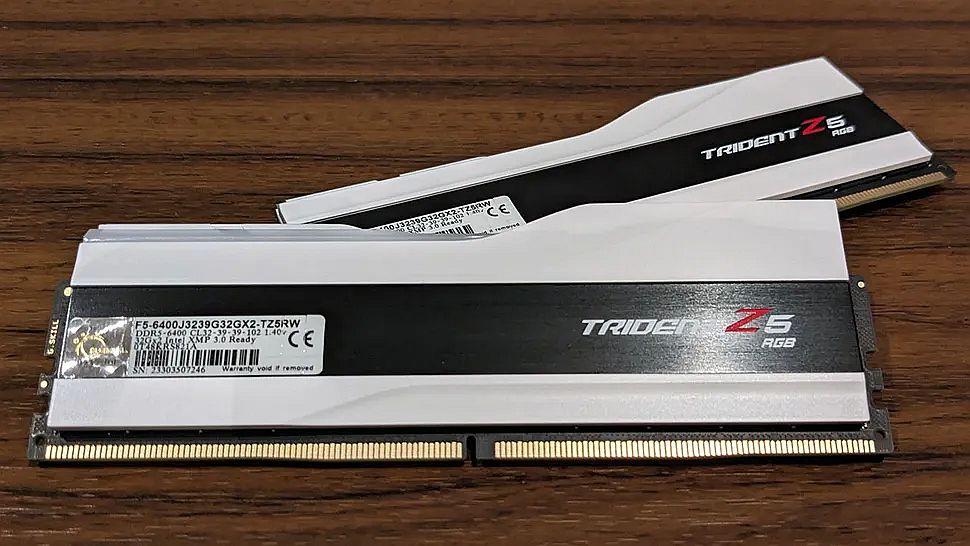
It looks like each couple of weeks there is a new “world file” CUDIMM reminiscence overclock. On the time of writing, the file stands at an eerie 12,666 MT/s, and such speeds can not help however whet my urge for food for the reminiscence customary.
CUDIMM RAM is reminiscence that makes use of “clocked, unbuffered” DIMMs, that means it has a clock driver that regenerates the clock sign for higher sign integrity, permitting for larger frequencies and extra transfers per second. This enables it to run so quick that it than makes up for slower timings and finally ends up being effectively value it. Solely drawback is, it is costly.
It might be good if 2025 may give us extra CUDIMM reminiscence kits that may provide such speeds for an inexpensive value. Then we would see important reminiscence enhancements with out even shifting up a DDR technology.
11. Extra CAMM2 reminiscence
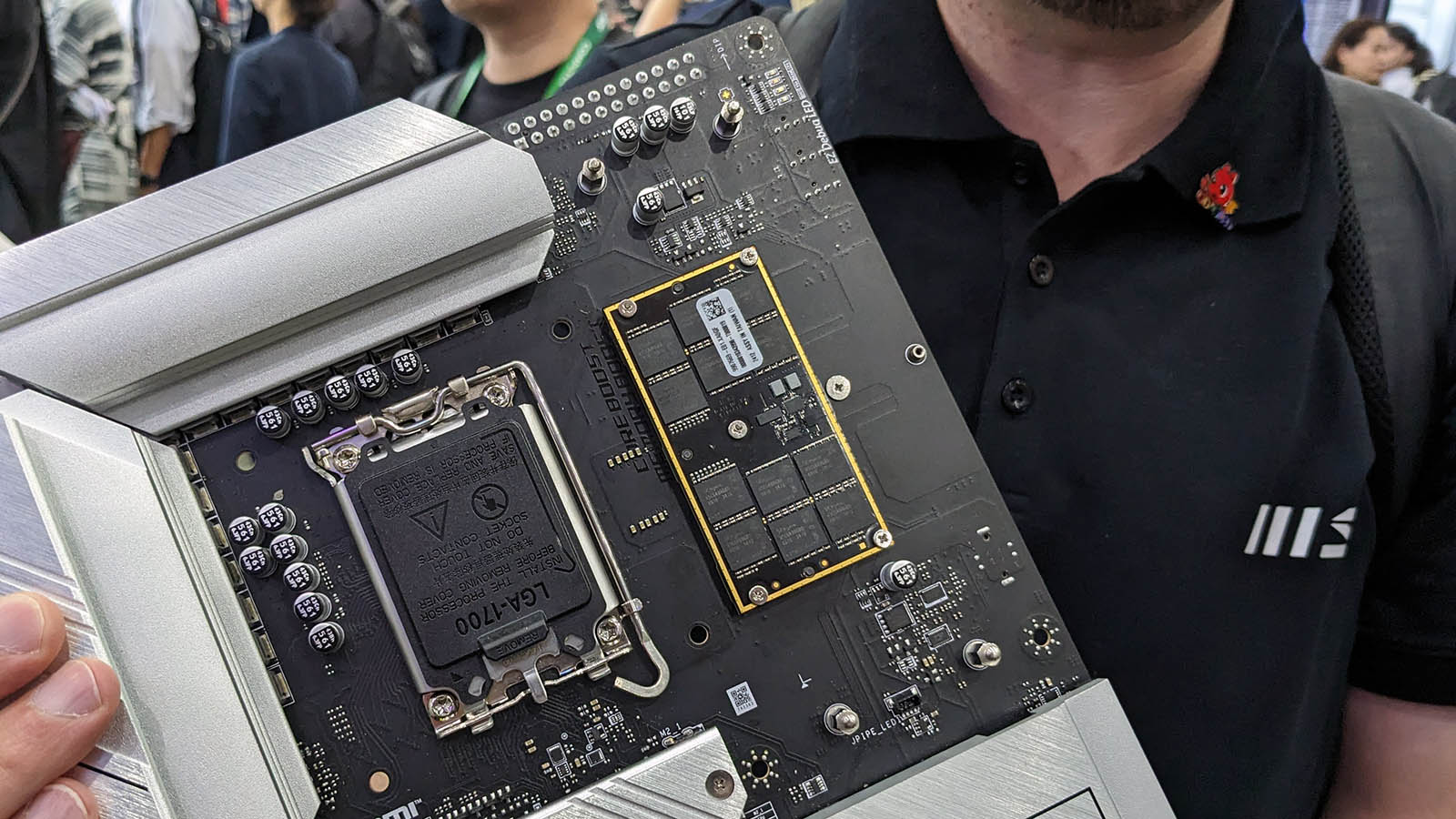
Okay, now this one’s extra of a “hopeful” than a “doubtless” growth, nevertheless it’d be good if CAMM2 reminiscence began its path in direction of wider adoption in desktop gaming builds.
CAMM2 reminiscence is a reminiscence type issue that lies flat towards the motherboard, and we obtained a primary glimpse of it in a desktop at Computex early in 2024. We’re anticipating extra laptop computer producers to go for the flush type issue to avoid wasting house and permit for simpler cooling, however there’s much less incentive to slap them inside desktops.
However much less incentive is not no incentive. Having reminiscence mendacity flat may permit for SSD-style top-mounted cooling, which might permit clocks to be pushed additional. Extra importantly, although, in my view—and maybe most naively—it seems to be somewhat good, and will surely match a hidden connector motherboard. It is likely to be a idiot’s hope, nevertheless it’s a hope I am clinging to for 2025.
12. Extra inexpensive OLED displays
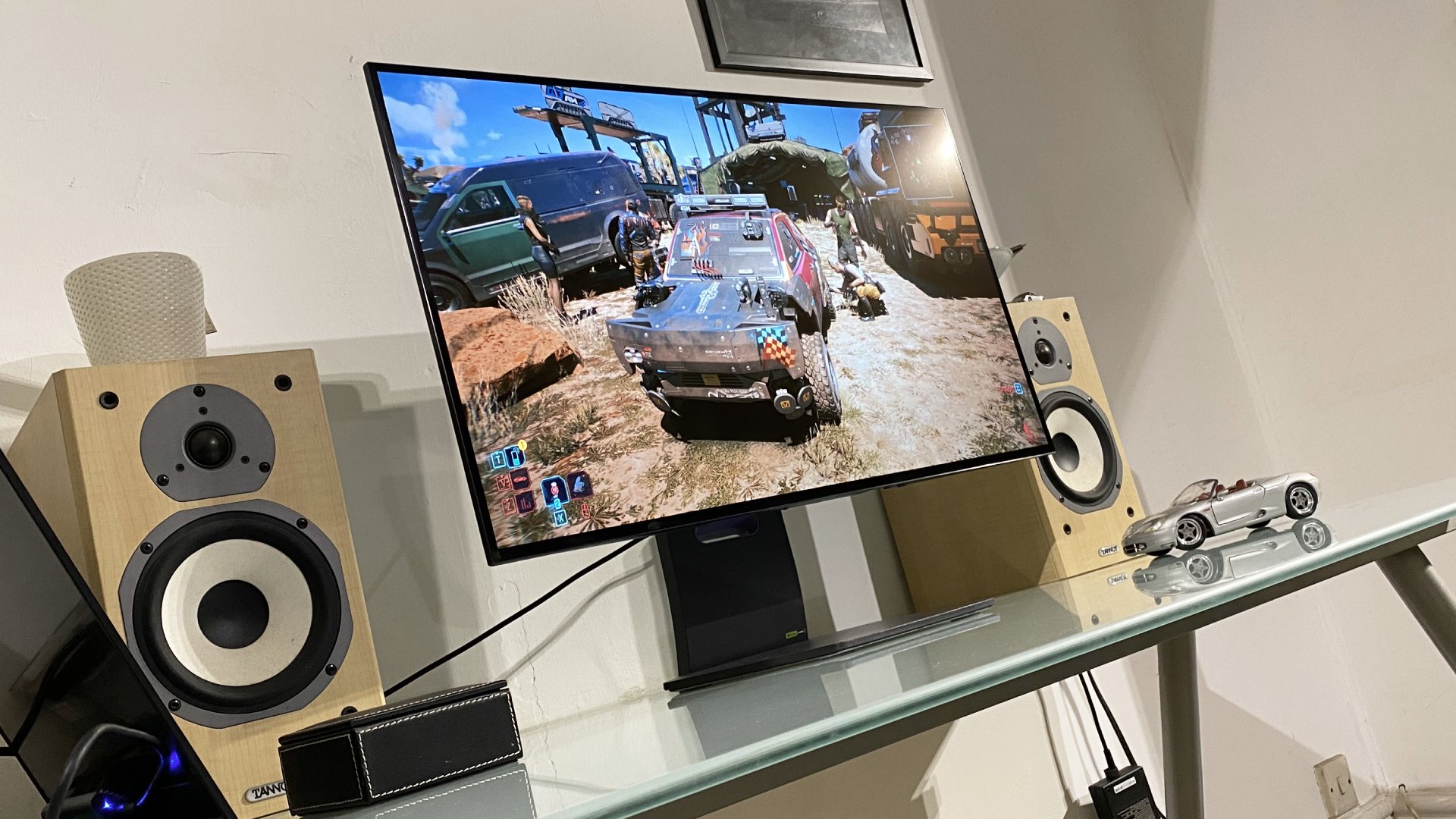
Within the land of displays, 2024 was undoubtedly the yr of the OLED panel. We witnessed a veritable onslaught of 32-inch 4K OLED displays, together with the very best high-end OLED gaming monitor, the LG UltraGear 32GS95UE.
I used to be a little bit late to the sport however I finally fastened my goggles on an OLED panel within the Omen Transcend 14 laptop computer, and I wrestle to explain simply how great these screens look. OLED panels are genuinely attractive.
However my God are they costly. We’re speaking costs that might bag you a completely new gaming PC, and never a foul one at that.
I am hoping that 2025 is the yr when OLED monitor costs drop, even when just a bit. Maybe this could imply the introduction of recent Samsung or LG 1440p OLED panels with a average refresh price, somewhat than 32-inch 4K ones.
I do know such manufacturing modifications cannot be embarked upon on a whim, however I reckon there’d be sufficient demand there for them for it to be worthwhile. And given 2024 noticed a determined push into the standalone OLED monitor market (versus the OLED laptop computer market), 2025 is likely to be the time for this to happen. I positive hope so.
13. ARM desktop chips

The principle ARM-based chips already out within the wild are Qualcomm’s Snapdragon X processors, which run Home windows on ARM surprisingly effectively and provide stellar battery life. These are all laptop computer chips, for now, although—sadly, the desktop dev equipment we preferred the look of was cancelled.
Given the seeming upward trajectory of Home windows on ARM, the prospect of ARM-based desktop chips is kind of thrilling. And it is not a pipe dream, both, given Qualcomm has already teased such CPUs and stated that we “ought to count on to see Qualcomm in each PC type issue”.
It isn’t so simple as simply porting issues straight over to desktop, although. For one, ARM chips do not at present have PCIe lane capabilities, which is an enormous requirement for, you realize, connecting all of your PC’s fine details collectively. And to pair an ARM chip with discrete graphics would require driver help, too, which at present does not exist.
However these issues aren’t insurmountable, thus Qualcomm’s seeming confidence that desktop chips will arrive. And if Qualcomm’s right in its evaluation, Arm itself is likely to be contemplating making its personal chips. Heck, as mentioned above, even Nvidia’s stated to be constructing off of an ARM structure for its rumoured in-house CPUs.
It isn’t a given, however 2025 may very well be the yr when all these items come into fruition and we begin to see the stirrings of ARM-based desktop processor competitors. With ARM’s potential for excellent energy effectivity and battery life, such processors may definitely make for some attention-grabbing gaming PCs.







